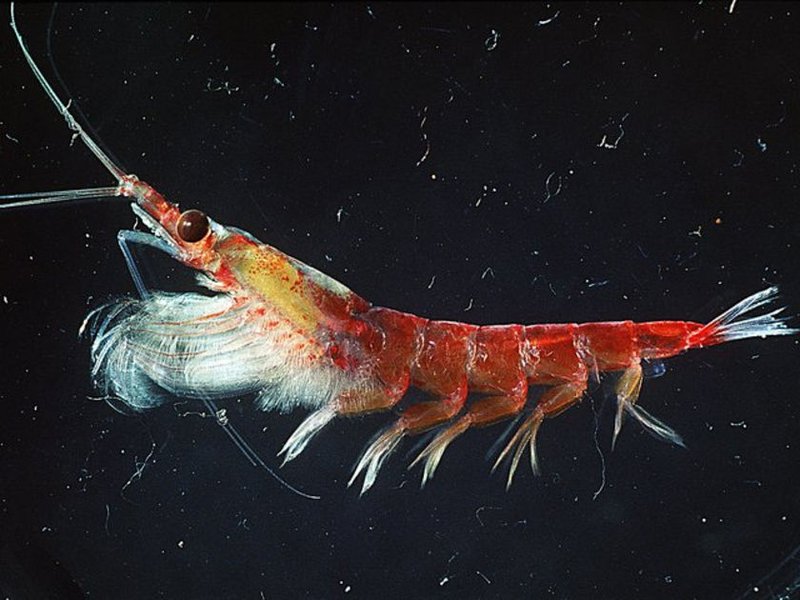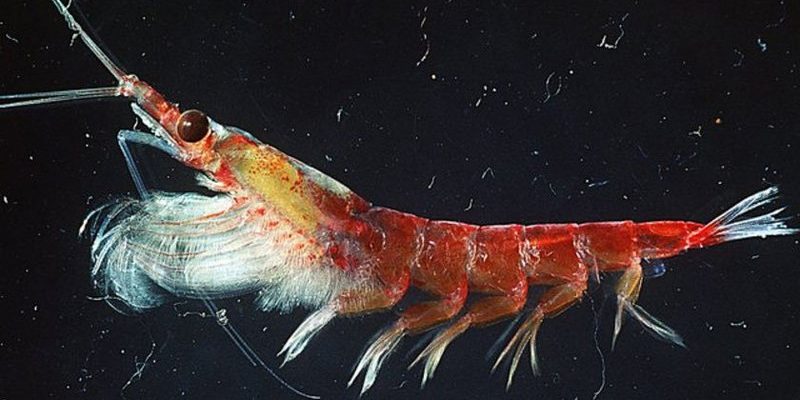
When you think of the ocean, you might picture majestic whales, colorful coral reefs, or schools of shimmering fish. But there’s a hidden world beneath the waves that plays an essential role in marine ecosystems: krill. Krill are small, shrimp-like crustaceans that live in some of the world’s coldest waters. Despite their tiny size, they are a big deal in the ocean, serving as a vital food source for a range of marine animals, including whales, seals, and even penguins. So let’s dive into the fascinating world of krill, exploring their biology, habitat, and importance in our oceans.
You might be wondering, “What exactly do krill look like, and where do they fit into the food chain?” These little creatures are typically no bigger than your pinky nail, yet they can form massive swarms that stretch for miles. In fact, in certain conditions, a single swarm can contain billions of them! Imagine a living, moving blanket of krill swimming through the ocean. It’s a sight that’s more impressive than it sounds and showcases just how important these tiny marine animals are.
What Are Krill?
At their core, krill are small crustaceans belonging to the order Euphausiacea. They can vary in size, but most species are only about 1 to 5 centimeters long. Their bodies are transparent, with a pink or reddish hue, which can sometimes make them look like tiny little shrimp. Krill are primarily found in the Southern Ocean, although they can also inhabit other cold-water regions around the globe.
One of the most fascinating things about krill is their lifecycle. They start off as larvae, drifting through the ocean, and as they grow, they undergo several molts before reaching adulthood. In ideal conditions, krill can reproduce several times a year, leading to rapid population growth. This is crucial, especially since they serve as a food source for so many animals.
Types of Krill
There are over 80 species of krill, but the most well-known is Antarctic krill (Euphausia superba). This species is vital to the Southern Ocean ecosystem and can reach lengths of up to 6 centimeters. Other notable species include the Northern krill (Meganyctiphanes norvegica) and Pacific krill (Nyctiphanes simplex). Each species has unique adaptations that help them thrive in their respective environments.
What makes krill stand out is their role in the ocean’s food web. They are herbivorous and predominantly feed on phytoplankton, which are microscopic plants that drift in the ocean. As they consume phytoplankton, krill play an important role in the carbon cycle, helping to transfer energy from these tiny plants to larger animals, including fish and marine mammals.
Habitat and Distribution
Krill thrive in cold ocean waters, with the largest populations found in the Southern Ocean surrounding Antarctica. Here, the waters are rich in nutrients that fuel vast phytoplankton blooms—this is essentially krill’s buffet. They generally inhabit the upper layers of the ocean but can dive deeper, especially during the day to avoid predators. This behavior is known as vertical migration.
During their nighttime feeding, krill move closer to the surface to consume phytoplankton. As dawn approaches, they make their way back down into the depths, where they can avoid predation from larger fish and whales. This daily pattern is not just a survival mechanism; it also plays a significant role in carbon cycling, as krill help transport organic materials from the surface to the deeper ocean.
Importance of Krill in Marine Ecosystems
The role of krill in the marine ecosystem cannot be overstated. They serve as a primary food source for a wide variety of species, including fish, seals, penguins, and even whales. In fact, the blue whale, the largest animal on Earth, relies almost exclusively on krill for survival. During feeding season, these whales can consume up to 4 tons of krill a day!
Krill also help regulate the ocean’s ecosystem by acting as a crucial link between primary producers, like phytoplankton, and larger predators. As they feed on these tiny plants, they convert the energy into a form that larger animals can utilize. This makes them indispensable not just for their immediate predators but also for maintaining the health of the entire oceanic food web.
Interesting Facts About Krill
| Size: | 1 to 6 cm long |
| Habitat: | Cold ocean waters, primarily in the Southern Ocean |
| Diet: | Phytoplankton |
| Speed: | Up to 1.5 km/h |
| Lifespan: | Up to 5 years |
| Population: | Estimated at 500 million tons |
Threats to Krill Populations
Despite their importance, krill populations face significant threats from climate change, overfishing, and ocean acidification. As ocean temperatures rise, the habitats and food sources for krill are shifting, which can affect their breeding cycles and survival rates. Additionally, as commercial interest in krill for aquaculture and dietary supplements increases, the pressure on their populations intensifies.
Changes in sea ice cover due to climate change are particularly concerning, as krill depend on ice algae for food. Without the proper conditions, their populations could diminish, leading to a ripple effect throughout the marine ecosystem. This situation highlights why protecting krill is crucial for maintaining the overall health of ocean life.
Conservation Efforts
Efforts to conserve krill populations are underway, driven by organizations that focus on sustainable fishing practices and environmental protection. By monitoring krill stocks and enforcing regulations on fishing, these organizations aim to ensure that krill can continue to thrive in their natural habitats. Moreover, raising public awareness about the role of krill in the ecosystem can help generate support for conservation initiatives.
Some countries are also investing in research to better understand krill biology, behavior, and the impacts of environmental changes on their populations. This knowledge is vital for making informed decisions about fisheries and environmental policies, which ultimately contribute to the long-term sustainability of krill and the marine animals that depend on them.
Krill may be tiny, but their impact on the ocean is anything but small. These fascinating creatures are the unsung heroes of the marine food web, playing a crucial role in supporting larger wildlife and maintaining the health of our oceans. Understanding their biology, habitat, and the challenges they face can help us appreciate the importance of protecting these small but mighty crustaceans. Next time you think about the ocean, remember the tiny giants swimming just beneath the surface, holding together the intricate web of life that makes the sea such an extraordinary place.
FAQ
What do krill eat?
Krill primarily feed on phytoplankton, which are microscopic plants drifting in the ocean. They have a unique feeding mechanism that allows them to filter these tiny plants from the water. At times, they may also consume zooplankton and even small fish larvae depending on their availability.
How many species of krill are there?
There are over 80 species of krill globally. The most widely known species is the Antarctic krill, which plays a pivotal role in the Southern Ocean ecosystem. Other species can be found in various ocean regions, each adapting to its specific environment.
How do krill reproduce?
Krill are prolific breeders. They typically spawn multiple times throughout the year, releasing thousands of eggs during each breeding cycle. The larvae then hatch and drift through the water column before settling and growing into adults.
What is the lifespan of krill?
On average, krill can live up to 5 years, although their lifespan can vary depending on environmental conditions and predation risks. Younger krill are particularly vulnerable to predators, which can impact their populations significantly.
How do krill affect the carbon cycle?
Krill play an essential role in the ocean’s carbon cycle by transferring energy from phytoplankton to larger animals in the food chain. Their feeding habits help regulate the amount of carbon in the ocean, contributing to a balanced ecosystem.
Are krill endangered?
While krill populations are not currently classified as endangered, they face significant threats from climate change and overfishing. Protecting their habitats and implementing sustainable fishing practices is crucial to prevent declines in their populations.
Can krill be farmed?
Yes, krill can be farmed, and there is increasing interest in commercial aquaculture. However, sustainable practices are vital to ensure that farming does not deplete wild populations or disrupt existing ecosystems.
Do krill have natural predators?
Yes, krill are preyed upon by a variety of marine animals, including fish, seals, penguins, and whales. Their small size and swarming behavior help them survive, but they are still a crucial food source for these larger predators.
What is the economic significance of krill?
Krill have economic importance as they are harvested for use in aquaculture feeds, dietary supplements, and even cosmetics. This commercial interest, paired with their ecological role, underscores the need for careful management of krill fisheries.
What role do krill play in the food web?
Krill are a fundamental part of the marine food web, acting as a primary food source for many larger animals. They transfer energy from phytoplankton to a variety of predators, maintaining balance in ocean ecosystems.
How does climate change impact krill?
Climate change can alter krill habitats and food sources, affecting their breeding cycles and survival rates. Changes in ocean temperature, ice cover, and phytoplankton availability due to climate change pose challenges for krill populations.

